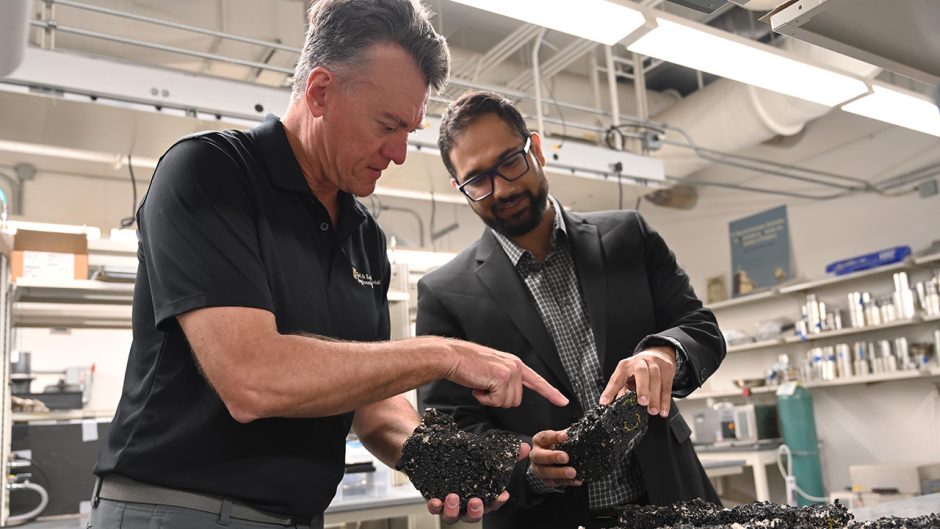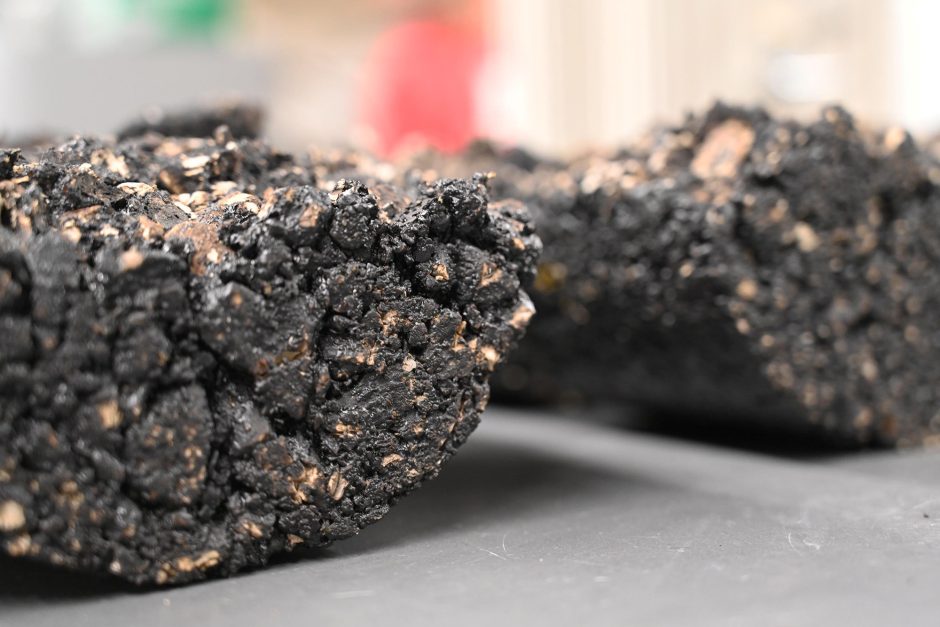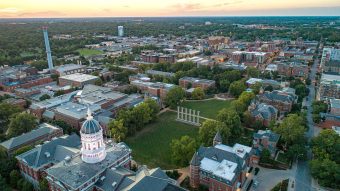
Oct. 15, 2024
Contact: Janese Heavin, heavinj@missouri.edu
Photos by Zac Anderson
Roads made with rubber-based asphalt mixtures are proving to be more durable than traditional asphalt, and they’re better for the environment by providing an effective way to recycle discarded tires.
But do they also help reduce greenhouse gas emissions? That’s what researchers at the University of Missouri are now aiming to find out.
Bill Buttlar, a professor in Mizzou’s College of Engineering, is optimistic the team’s findings could pave the way for a new era of rubberized roads across the U.S.
“Rubber-based roads have been around for more than three decades, it’s just that the amount of this material has been relatively small,” said Buttlar, who is the Glen Barton Chair in Flexible Pavement Technology. “In the U.S., growth of rubber-modified asphalt has been slow. Now, the increased focus on sustainability is creating a demand for it.”
A recipe for success
To ensure contractors know what they’re getting when choosing which asphalt mixtures to use, Buttlar and his team are devising a way to quantify the environmental impact of rubber-modified asphalt.
This includes measuring the amount of carbon dioxide (CO2) and other greenhouse gases emitted not only when roads are built, but also during the process of grinding tires into rubber.
With a $1.2 million grant from the Environmental Protection Agency, the team is creating environmental product declarations (EPDs) for the recycled tire rubber industry. These EPDs act like nutrition labels for construction materials, said Punya Rath, an assistant research professor who works alongside Buttlar in the Mizzou Asphalt Pavement and Innovation Lab.
“Food labels are highly visible and will tell you about the product — it has this many grams of sugar, this much sodium and so on,” he said. “EPDs will tell you how much CO2, nitrogen dioxide and other gases are emitted during the production of rubber-modified asphalt mixtures.”
That data already exists for more traditional asphalt mixtures, as well as other construction materials, and can be found in a national database. But the data has not yet been collected for roads using rubber-modified asphalt.
And that’s especially important now that the Federal Highway Administration (FHWA) — which oversees the nation’s highway systems — has allocated funding to boost the use of low-carbon construction materials.
“For the FHWA to enforce low-carbon materials, there has to be some way to quantify it,” Rath said. “How are you going to say which asphalt is less carbon-intensive? We need a scoring system to make that comparison.”
To get the data, Mizzou researchers are working with the U.S. Tire Manufacturers Association, as well as Michigan Technology University, and the Scrap Tire Research and Education Foundation.

A sustainable path forward
More than 350 million tires are produced in the U.S. each year. And right now, there aren’t many uses for discarded tires.
“They can go to landfills, but that’s not great because tires are tough and don’t degrade easily,” Rath said. “They can be burned, which is greener than burning coal but a waste of highly engineered materials.”
While rubber from recycled tires has been used in products such as mulch and roof shingles, the market for these applications hasn’t been large enough to keep up with the supply. There are, however, plenty of roadway miles in need of repair.
“The transportation industry produces about 500 million tons of asphalt per year,” Rath said. “We could use a significant number of scrap tires, if not all, that the U.S. generates.”
To test the viability of rubber-modified asphalt, Buttlar and his team have been working on several road projects across Missouri, including a 1.4-mile stretch on Stadium Boulevard in Columbia.
In Kansas City, crews recently laid asphalt containing both rubber and recycled plastic along a municipal road. Additionally, rubber-modified asphalt has been used along interstates 44, 70 and 155, as well as U.S. Highway 63 near Rolla.
The results so far have been promising, Buttlar said. Studies have shown that rubber-modified asphalt roads can last up to two times as long as traditional asphalt surfaces, which results in less construction and fewer potholes. Rubber also makes the roads smoother, meaning less wear and tear on vehicles and tire treads.
Having sustainability data from the EPDs will also ensure these roads are environmentally friendly while still being as affordable as traditional asphalt options.
“In the past, we’ve looked at what material contractors can provide at the lowest cost,” Buttlar said. “Now, we’re adding sustainability to that equation. This will allow us to choose the materials that perform well, are low cost and are better for the environment. This is a new tool to drive us toward that triple bottom line.”



